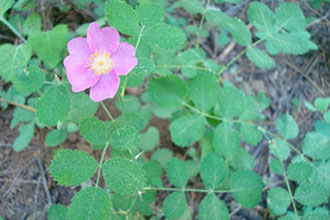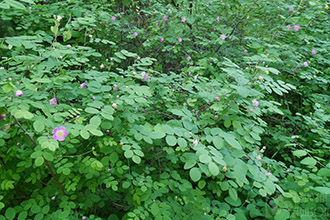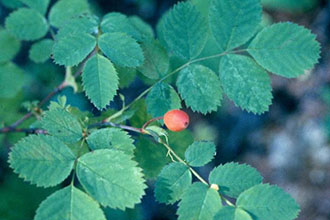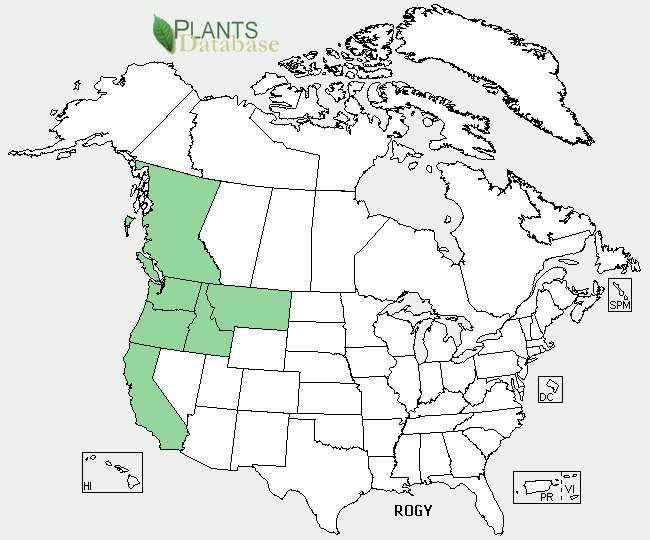Taxonomy: Kingdom - Plantae (plants). Subkingdom - Tracheobionta (vascular plants). Superdivision - Spermatophyta (seed plants). Division - Magnoliophyta (flowering plants). Class - Magnoliopsida (dicotyledons). Subclass - Rosidae. Order - Rosales. Family - Rosaceae (rose). Genus - Rosa L. Species - Rosa gymnocarpa Nutt.
Ecology: Baldhip rose is shade tolerant; it persists from the initial plant community to climax. It flourishes initially with thinning and opening of the canopy, but then slows in growth. Baldhip rose grows in full sunlight but has a higher overall survival rate in the shade. Baldhip rose occurs predominantly in the low-shrub layer of moist, shaded forests of British Columbia and the Pacific Northwest. It is generally found at elevations of 1,500 m or less. It is well adapted to mesic-coniferous understories and grows best on eastern and southern exposures. It is found in both mountainous and riparian areas. Baldhip rose is adapted to a variety of moisture conditions but fares better on slightly dry sites. It is adapted to a short growing season.
In the WFDP: Baldhip rose is abundant at small sizes in the WFDP, but larger shrubs are rare; only one stem reaches 1 cm at DBH that is tagged.



